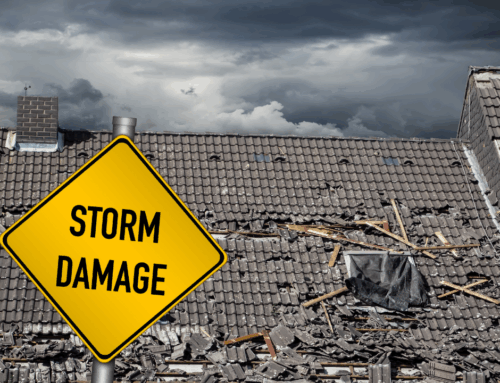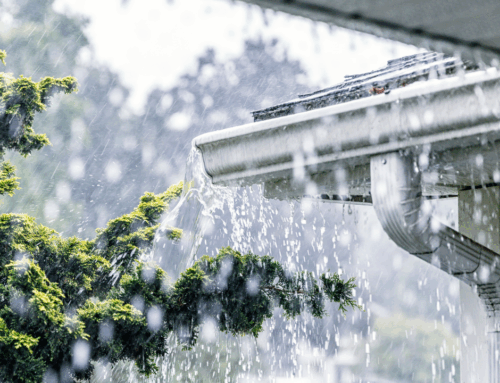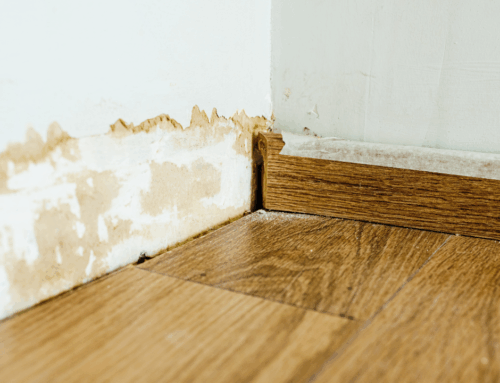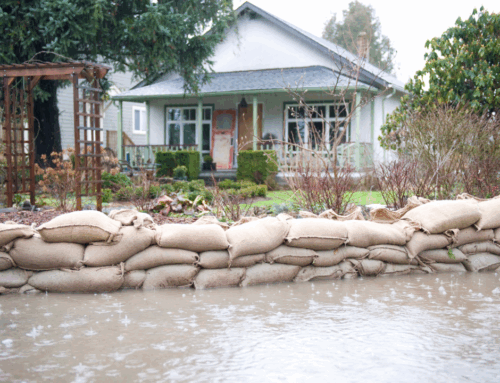10 Overlooked Tips for Preparing Your Michigan Home for Spring Storms
Dealing with spring storms is a fact of life here in Michigan, with the annual cost of the subsequent property damage usually running well into the millions of dollars. Year-round maintenance is key to giving your house the best possible chance of coming through a storm intact, while there are a handful of routine measures you’re probably used to carrying out when you know an adverse weather event is on the way, like checking the condition of your roof, removing precarious-looking tree limbs and anchoring outdoor furniture. But sometimes, it’s the less obvious things that can make the biggest difference when it comes to avoiding a sizable storm damage repair job. Here, we take you through ten extra steps that you mightn’t previously have thought about…
1. Make Sure Your Gutters Are Healthy
Compared to your roof itself, it can be easy to underestimate your gutters’ role in protecting your home from water damage during a storm. If your gutters are incapable of collecting and directing rainwater away in the way they’re supposed to, the water is simply going to end up somewhere else instead – for example, your siding and exterior walls, which can lead to staining and the development of mold. If you’re not already in the habit of doing so, you should start emptying your gutters on a regular basis as soon as possible. It’s worth double-checking they’re affixed to your roof in the way they’re supposed to be, too.
2. Seal Up Foundation Cracks
While it’s true that some foundation cracks are harmless, it’s best not to take any chances going into the spring storm season. Left unchecked, they can serve as an entry point for water, causing problems as severe as flooding or structural damage. Before you apply any caulk, make sure you remove any debris from the crack to give it a chance to take hold. If you come across a crack that’s larger than half an inch wide, it’s best to call in a professional to take a look at it. Generally speaking, vertical cracks are less of a worry than horizontal or diagonal ones, which can be indicative of more serious issues.
3. Trial Your Sump Pump
Staying at the bottom end of your home, it’s certainly worth setting a little bit of time aside to make sure your sump pump is ready to go for the spring storm season. Typically, it’ll just be a case of pouring water into the basin of the pump until you see the float rise and the pump turn on. If it doesn’t activate or takes its time to drain – or if you hear any unusual noises – you should seek expert help or consider investing in a new pump. A malfunctioning pump can easily lead to a flooded basement or crawl space, posing another threat to your home’s structural integrity.
4. Secure Any Garage Doors
A lot of people forget that their garage door, if they have one, is usually the largest moving component of an entire property. They also tend to be less structurally sound, and in a high wind, they can bend, buckle or blow out entirely – leading to much more significant damage elsewhere in your home. DIY bracing systems are easy to get hold of, though you shouldn’t leave it until the last minute. Also, if you’ve any slight gaps between the door and the floor, you can use sandbags to resist the flow of water and stop your garage from flooding.
5. Install Storm Shutters
With storm activity on the rise in Michigan – indeed, the theory that “Tornado Alley” is shifting eastward is beginning to take hold – the need to fortify your property as much as possible has never been greater. Introducing storm shutters to your windows may feel like a bit of an investment but they can take on a pivotal role in safeguarding what are typically the most vulnerable parts of your home. In fairness, you might recoup much of the outlay anyway in the difference they can make to your insurance premium, not to mention the value of your property.
6. Check Your HVAC System’s Health
A functioning HVAC system has a big part to play during a storm, allowing you to maintain a comfortable temperature inside your home while also preserving the quality of the air you breathe. Unfortunately, outdoor units can be left exposed, particularly if they’ve been neglected for a period of time. First and foremost, you should make sure your unit is securely anchored, and if you live in an area that’s prone to flooding, it should be elevated as much as possible. Consider installing a surge protector to minimize the risk of electrical damage in the wake of a storm, and make sure all branches, twigs and leaves have been cleared from your unit before further debris has a chance to clog it up further.
7. Have A Backup Power Plan Ready to Go
During a storm, heavy winds can easily disrupt power lines and leave you without electricity for hours or even days at a time. At the very least, a backup power source can help keep essential items running, and in some cases it can even be a lifesaver. Determining what type of source to go for will largely boil down to the size of your property and your own specific needs; not everybody will be reliant on a piece of medical equipment, for example, but if you are, it’s absolutely critical that you know what its power requirements are. There are various different sources available, from all-encompassing standby generators, which sit permanently on your property and are capable of powering a whole house, to something smaller and more portable.
8. Test Your Smoke Detectors
Again, this is something you should be doing as a matter of course anyway, but if you know that a storm is heading your way, it’s imperative you carry out another test of each of the smoke detectors inside your house. Lightning strikes and power surges mean there’s a heightened risk of a fire breaking out and it goes without saying that swift action can be the difference between life and death.
9. Prepare an Emergency Kit
All families should have a designated “safe place” inside their home in which to gather during a storm, ideally on the lowest level of the house and well clear of exterior walls. There, you should also set aside some space to stockpile a number of crucial items, including water, canned food and a first aid kit – to name just a few. It’s a good idea to have one or two tools to hand, as well; quickly sealing a broken window with duct tape can prevent a mild case of water damage from becoming a severe one, though you should obviously still exercise caution at all times.
10. Take Photographs or Videos of Your Property in Advance
The hope is that you won’t need them, but if your property falls victim to storm damage you’ll quickly end up on the phone to your insurance provider and being able to provide clear images of your home before and after the event will speed up your claim significantly.
If Disaster Strikes…
Even with all of the preparation in the world, anybody can find themselves affected by severe weather and facing the prospect of storm damage repair. Both personally and practically, it can feel debilitating.
That’s where X-Cel Restoration comes in. We provide a 24/7 emergency service to immediately start getting you back on your feet and, working with your insurance company, will handle every single aspect of the subsequent restoration process to help your house feel like home again as swiftly as possible. When the worst happens, we’re here for you.




